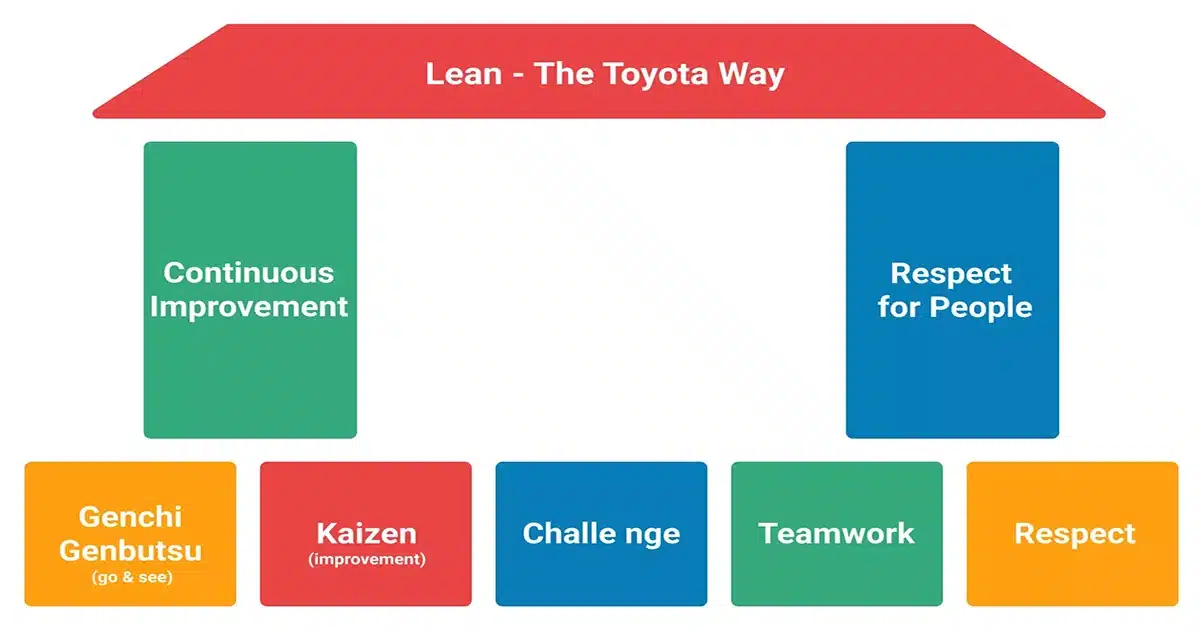Do you want to improve your processes and eliminate inefficiencies? Consider implementing Lean management. This powerful management method, which originated in Japan, enables you to maximize value while implementing a continuous improvement approach. The Lean approach is ideal for increasing customer satisfaction, lowering costs, and speeding up production. It is based on certain key principles, which we present to you in this dedicated article.
What is Lean management?
Lean management is a management technique that focuses on reducing inefficiences. The approach’s goals are to improve processes, increase production speed, and improve product quality.
The Toyota Production System (TPS) inspired the Lean approach. TPS was developed by Japanese engineer Taiichi Ohno, who was inspired by Fordism and Just-in-Time manufacturing. His method was designed to reduce waste, improve customer satisfaction, and streamline production in the automotive industry.
The Lean method was born in an article titled Triumph of the Lean Production System by John Krafcik in 1988.
The basic concepts
In order to implement management methods such as Lean, it is necessary to understand the fundamentals. The Lean approach, which aims at operational excellence, is based on 5 fundamental principles.
1. Identify the value
If you want your customer to buy your product or service, you must first determine its worth. This is your approach to resolving a customer issue. So it is a waste of time and resources if a process is not designed to assist the customer in finding a solution.
So, start by identifying the value of the product in order to maximise it and eliminate all the elements that could diminish it or hinder the processes.
2. Mapping the value chain
Since you need to eliminate elements that do not add value, it is necessary to map the flows. Once you have fully identified the actors, tasks and actions, you need to analyse your flows to determine which elements can be eliminated.
According to Taiichi Ohno, there are seven types of waste (also called muda): overproduction, waiting, transport, overstocking, unnecessary movements, unnecessary processes and production of defective parts.
3. Create a process
You have identified opportunities for improvement, so it is time to implement a new work organisation. Designing a new workflow for your production process will help to increase efficiency.
Ideally, you should get your staff and teams to work together to create these new processes. Actions and tasks should be broken down into subtasks and it is recommended to eliminate anything that could create bottlenecks.
4. Designing a pull system
The Japanese system is based on a “just-in-time” production concept. In other words, a process only starts once the previous one has been completed. To apply this approach, it is essential to be very rigorous.
Unlike the “Push” approach, which works on production forecasts, the “Pull” approach is triggered by customer demand. This is why the working environment and methods must be perfectly optimised to meet customer expectations on time.
5. Refining your process
Lean management must be part of a continuous improvement culture. Regular meetings, effective teamwork and performance monitoring allow for productivity improvement practices to be put in place.
The benefits of the Lean method
The regular improvements enabled by the Lean method are ideal for accessing numerous benefits for your company:
- Process improvement: The mapping of processes, their optimisation and the elimination of waste allow a rationalisation of actions and improvement of processes and team productivity.
- Quality increase: With its iterative approach, the Lean method is perfect for identifying potential improvements. Step by step, problems are solved and the product is refined, thus improving quality.
- Lead time reductions: With more efficient processes, elimination of waste and bottlenecks, this management method helps to improve delivery times as well as reduce production costs.
- Increased satisfaction: The Lean method focuses on added value. Continuous improvement combined with an understanding of customer needs leads to a significant increase in customer satisfaction.
What are the tools of lean management?
It is critical to use specific tools to successfully implement Lean. Identifying inefficiencies, optimizing processes, and attempting to measure improvements all require the use of the appropriate tools.
Tools can be classified into two categories: techniques and software tools.
Among the techniques used in the Lean method, we can mention:
- Value Stream Mapping: Also called Value Stream Mapping, it consists, as we have seen, in representing the processes to identify waste, but also the possible improvement opportunities.
- The 5S: Used to optimise the workspace in Japanese companies, the 5S technique is based on 5 principles which are sorting, tidying, cleaning, standardising and maintaining.
- Kaizen: A pillar of continuous improvement, this method requires all employees to get involved to identify the problems to be solved, then solve them collectively and progressively.
- Kanban: Designed to visualise and manage workflows, the Kanban method uses cards representing tasks to be carried out, in progress or completed.
We recommend that you use software tools in addition to these practical tools or methods. These can take the form of a collaborative work suite, for example. This will allow you to centralize documents and exchanges in order to mobilize teams around a common goal and effectively deploy the Lean method. Such tools incorporate the Kanban method as well as functionality for creating a value chain map.









